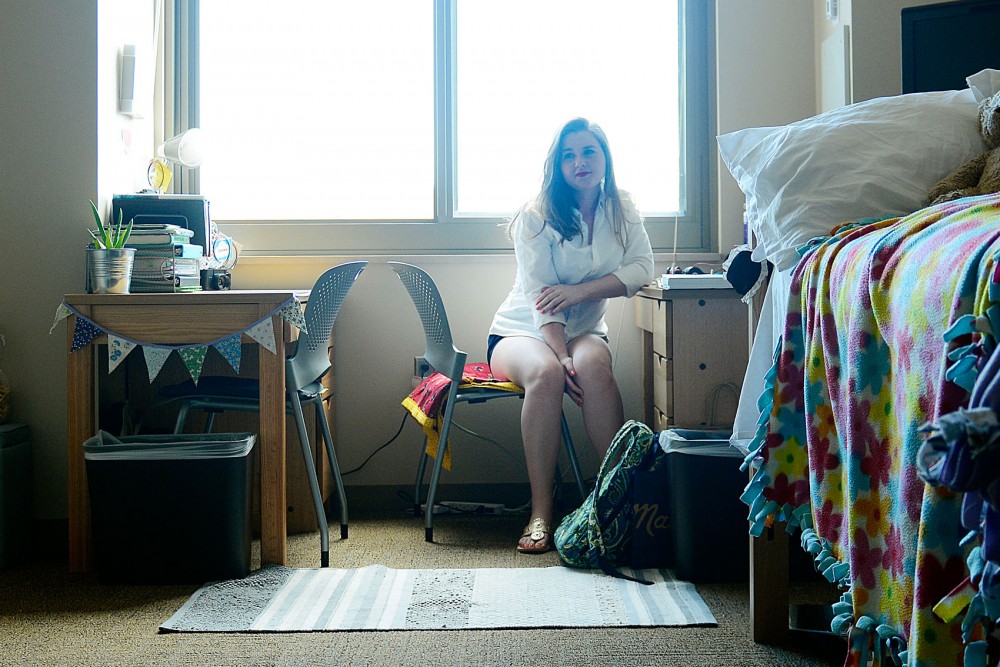The University of Minnesota wants more of its students to live on campus for their sophomore year.
This approach to student housing is gaining traction across the country, and University data show that students who live on campus tend to have higher graduation and retention rates.
Within the next few years, University officials are aiming to get 25 percent of freshman to return to on-campus housing — even as students increasingly choose to look for housing options off campus in surrounding neighborhoods.
“We’ve certainly seen some migration off campus over the past 10 years,” said Housing and Residential Life Director Laurie McLaughlin.
Currently, about one-fifth of freshmen who live in University housing stay on campus during their sophomore year, she said.
Compared to students who lived on campus for only one year, those who stayed two years were nearly 9 percent more likely to remain at the University for their third and fourth years of school, according to 2010 University data.
Four-year graduation rates, too, are consistently higher for students who spend two years in University housing, according to Board of Regents documents.
But since 2007, the number of students returning to University housing has trended downward.
To entice more students to return, McLaughlin said the University will work to communicate the benefits of living on campus.
Since freshmen begin considering their second-year housing options in the fall, part of the University’s strategy will be to market to students early in the academic year, McLaughlin said. Officials also plan to communicate with parents on the issue and hold focus groups with students to explore different ways to get sophomores to return.
Reaching the goal of 25 percent of sophomores living on campus is feasible even with the current residential halls’ space, McLaughlin said, but going beyond that figure would require more strategic thinking.
“We wouldn’t have the capacity to house every first-year student who chose to return,” she said.
The University has one of the lowest ratios of on-campus beds to undergraduate students in the Big Ten, according to a fall 2013 Marquette Advisors study.
To open up on-campus housing space in the future, the University might consider limiting the number of students who can live on campus for more than two or three years, McLaughlin said, but that plan isn’t currently in place.
Other Big Ten universities are also increasing their focus on recruiting students to live on campus for a second year.
“I do think it’s on everyone’s radar,” McLaughlin said.
Ohio State University is planning to require sophomores to live on campus as part of its Second-Year Transformational Experience Program, said Dave Isaacs, a spokesman for the school’s Office of Student Life. The college already requires its freshmen to live on campus, and the sophomore requirement will likely come in the next few years, he said.
The second-year program at OSU connects students with faculty members, and it will also provide funding for students to pursue opportunities like study abroad and internships, Isaacs said.
Living on campus can be a worthwhile option for students who plan to study abroad for a semester, since it’s easier to get out of a University of Minnesota housing contract and avoid paying rent for an entire year, said Stephanie Murch, a University sophomore who is living on campus for a second year this fall.
Murch said she largely based her housing decision on residence halls’ convenient locations and the ease of not having to sign an off-campus lease.
But she said a requirement for all sophomores to live on campus would take the issue a step too far. Some students don’t feel like adults if they live under the supervision of university employees, she said.
The University of Illinois at Urbana-Champaign encourages students to live on campus for more than one year — but only to a certain point, said Kirsten Ruby, the college’s associate director of housing for communications and marketing.
“If they all [returned], we wouldn’t have space for everybody,” she said.
Although the University of Minnesota isn’t considering a requirement for sophomores to live on campus, McLaughlin said, administrators still want more of them to take advantage of the institution’s housing options.
“I think there’s still a lot to offer for second-year students,” McLaughlin said.


